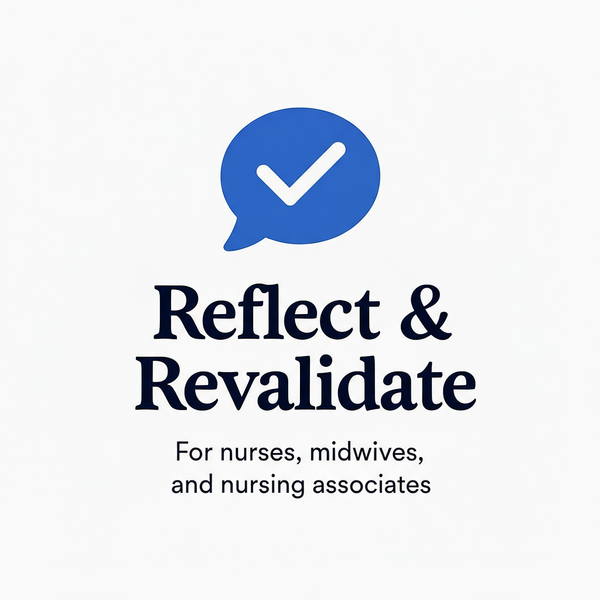Reflection: Developing a Communication Passport for Hospital Admission
Share
Submitted by: Chris - Learning Disabilities Nurse, Community Team
What was the nature of the CPD activity and what did you hope to learn from it?
I was supporting Jake (pseudonym), a 22-year-old man with autism and a learning disability who needed to be admitted to hospital for planned surgery. Jake had significant communication difficulties, became very anxious in unfamiliar environments, and had specific sensory sensitivities that could trigger distress.
Jake's previous hospital admission had been traumatic—staff didn't understand his communication needs, his anxiety escalated, and he became so distressed that the procedure had to be postponed. His family were understandably worried about the upcoming admission and whether hospital staff would be able to meet Jake's needs.
I hoped to learn how to prepare people with learning disabilities for hospital admissions, ensure their communication needs are understood by hospital staff, and advocate for reasonable adjustments that would support Jake to have a positive hospital experience.
What did you learn from the CPD activity?
I learned the value of communication passports as a tool for sharing essential information about a person's needs, preferences, and communication style. Working with Jake, his family, and his support workers, I developed a detailed communication passport that explained how Jake communicates, what causes him anxiety, what helps him feel calm, and how staff should interact with him.
I learned the importance of involving the person themselves in creating these resources. Although Jake has limited verbal communication, he was able to choose pictures for his passport and indicate what was important to him. This person-centred approach ensured the passport truly reflected his needs and preferences.
The experience taught me about proactive liaison with hospital services. Rather than just sending the passport ahead, I arranged a pre-admission visit for Jake to see the ward, meet some staff, and familiarise himself with the environment. I also met with the ward team to discuss Jake's needs and the reasonable adjustments required.
I also learned about the power of advocacy. I advocated for Jake to have a longer admission slot, for his support worker to stay with him throughout, and for environmental adjustments like a quiet side room and dimmed lighting. These adjustments made the difference between a traumatic and a successful admission.
How did you change or improve my practice as a result?
I now routinely develop communication passports for all the people I support who have communication difficulties, not just for hospital admissions but for any situation where they'll interact with unfamiliar services or professionals. These passports have become an essential tool in my practice.
I've improved my liaison work with mainstream health services. I now proactively contact hospital wards before admissions, offer to meet with staff, and provide training or guidance about the person's needs. This preparation significantly improves outcomes and reduces anxiety for both the person and hospital staff.
I've also become more confident in advocating for reasonable adjustments. I now clearly articulate what adjustments are needed, explain why they're important, and reference the Equality Act to support my requests. This assertive advocacy ensures people with learning disabilities receive equitable healthcare.
Following this experience, I've developed a template communication passport that I share with colleagues, and I've delivered training to hospital staff about using communication passports and making reasonable adjustments for people with learning disabilities.
How is this relevant to the Code?
This reflection demonstrates several aspects of the NMC Code:
Treat people as individuals (1.3): I developed an individualised communication passport that reflected Jake's unique needs, preferences, and communication style.
Act as an advocate (3.4): I advocated for reasonable adjustments and appropriate support to ensure Jake could access healthcare on an equal basis with others.
Communicate effectively (7.1): I ensured Jake's communication needs were understood and met by creating a clear, accessible communication passport and liaising with hospital staff.
Work in partnership (2.1): I worked collaboratively with Jake, his family, support workers, and hospital staff to ensure his needs were met.
Share skills and experience (9.4): I shared my knowledge about learning disabilities and communication with hospital colleagues, helping them develop their skills and confidence.
Do you have any further comments?
Jake's hospital admission was successful. The ward staff used his communication passport, implemented the agreed adjustments, and Jake was able to have his surgery without the distress he'd experienced previously. His mum said it was 'like a different experience' and thanked me for making it possible.
This experience reinforced for me that people with learning disabilities often face barriers to healthcare not because of their disability, but because services aren't adapted to meet their needs. With the right preparation, communication tools, and reasonable adjustments, people with learning disabilities can access healthcare successfully.
I've learned that learning disabilities nurses have a crucial role in bridging the gap between people with learning disabilities and mainstream health services. By creating communication passports, providing liaison, and advocating for adjustments, we can ensure people with learning disabilities receive safe, effective, person-centred healthcare.
